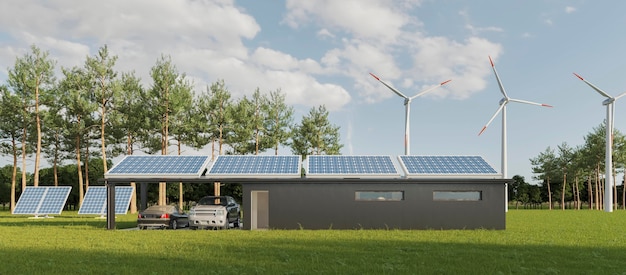
We’re always looking for ways to cut down on everyday expenses, so why not consider our utility bills too? It can be tough to negotiate lower rates for electricity, gas, and water since there are often limited providers. However, there are some strategies to lower electricity costs, and switching to solar power could be a significant one. We’re seriously considering this switch, so we’re eager to evaluate the potential savings from using solar energy to see if it’s worth the investment.
ESTIMATING YOUR CURRENT ELECTRICITY EXPENSE
Calculating your electricity usage depends on several factors like:
– The size and age of your home
– The number and quality of doors and windows
– Weatherproofing measures
– The types and amounts of electric appliances
– The number of people living in your home
On average, households use around 877 kWh of electricity per month or about 10,649 kWh per year. With the average cost per kWh being about $0.13, the typical annual electricity expense is about $1,384.37.
In my area, electricity costs $0.11 per kWh, which is a bit lower than the national average. For our household of seven people living in a 1,888 sq. ft. home, our annual electricity cost was $1,461.24. Although this seems higher, we have more occupants and a 30,000-gallon in-ground pool used for half the year, making our usage comparatively lower.
COST OF OPTING FOR SOLAR PANELS
Next, you need to estimate the cost of installing solar panels. Most systems provide a power output of 6 kW, yielding between 7,000 and 9,000 kWh of energy. While this might not seem enough to power your entire house year-round, it actually is. Your house will use the solar-generated power first, then switch to the grid when solar energy runs out. Conversely, when there’s extra solar power, it goes to the grid, effectively selling power when you have more than you need and buying it when you don’t. Many people end up with a zero-balance with their electricity provider.
IS IT REALLY WORTH IT?
This means you won’t need to pay your electricity company but only for the solar panels. You can purchase them upfront or lease them for 10-12 years. Leasing might be a good option if you can’t afford the upfront cost, but it does involve paying interest, potentially leading to a net loss.
Solar panel installation costs range between $15,000 and $25,000, depending on your location and roof specifics. In my area, the cost is closer to $15,000. Considering our current spending, it would take us about 10 1/4 years to break even on the solar panel investment.
THE BONUS OF TAX CREDITS
The federal government currently offers tax credits for solar panel purchases. This credit, introduced in 2005, is set to phase out by 2024. If we buy solar panels this year for $15,000, we’d get a 26% tax credit, reducing our cost to $11,100. This means we’d break even in approximately 7 3/4 years, enjoying essentially free electricity for 17 1/4 years after that.
SUMMARY OF GOING SOLAR
Switching to solar energy requires considering your current electricity usage and ways to reduce it. You need to calculate your per kWh cost and annual expenditure to determine if solar panels are a smart investment. Also, remember the added benefit of tax credits.
In our case, we’re still debating, mainly because we’re unsure if investing in solar panels would offer better returns compared to other options. So, we’re still deciding.
Have you discovered that going solar could help reduce your electricity costs?